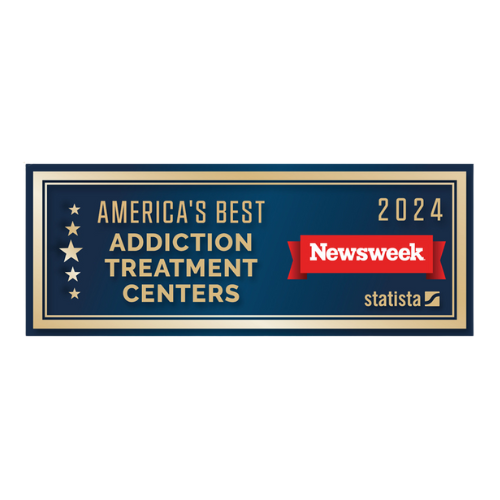Oftentimes different mental illnesses share similar symptoms, such as BPD and PTSD. This might make it challenging for clinicians to correctly diagnose an individual right away. Usually, they need to spend a few sessions with a person to understand them better before making a diagnosis.
Borderline personality disorder and post-traumatic stress disorder, especially complex PTSD, are two such conditions. A person can have one or the other but it’s also possible for them to have both BPD and PTSD at the same time. Clinicians need to take time and care into properly diagnosing, though, so the person receives proper treatment.
How can you tell the difference between borderline personality disorder and post-traumatic stress disorder? While it’s always best to seek professional help for a proper diagnosis there are a few signs to look for. Continue reading to learn a basic understanding of the differences between BPD and PTSD.
BPD and PTSD: Understanding the Differences Between the Two
Borderline personality disorder and complex post-traumatic stress disorder are difficult sets of mental illnesses to separate. Symptoms that seem to come from one might actually come from the other and vice versa. Despite the similarities between the two, though, there are also some distinct differences.
Qualified psychologists and psychiatrists are trained to notice the subtle variations between the disorders. It’s more challenging for people who aren’t familiar with mental illness to separate them. Even then, until you know what each disorder is you won’t understand what makes them different.
Borderline Personality Disorder
Borderline personality disorder often referred to as BPD, is a mental illness classified as a personality disorder. BPD is characterized by shifting and often erratic patterns of mood, behavior, and self-image. This changing view of themselves and their surroundings leads to impulsive decisions and difficulties maintaining healthy relationships.
Symptoms of BPD include:
- Distorted self-image
- Going extreme lengths to avoid abandonment
- Patterns of extremely unhealthy relationships, both platonic and romantic
- Participating in impulsive and risky behaviors such as:
- Substance abuse
- Spending sprees
- Reckless driving
- Unsafe sex
- Self-harm or suicidal ideation or behaviors
- Intense and rapid mood swings
- Difficulties trusting other people
- Intense bouts of uncontrollable anger
One of the key characteristics seen in people with BPD is their tendency to view things in extremes. Also called “black and white thinking,” they see things as being either one way or the other, all good or all bad. They usually see little to no room for middle ground so this encourages rash decision making and drastic changes in their opinions of others.
Post Traumatic Stress Disorder
You’ve likely already heard of post-traumatic stress disorder. It’s commonly known for its effects on soldiers who return from combat. Soldiers aren’t the only ones who develop PTSD, though. 7 to 8 percent of people exposed to a traumatic event develop PTSD at some point in their life.
- Intrusive, upsetting flashbacks of the traumatic event (“reliving” the event)
- Having difficulties sleeping, especially due to nightmares
- Avoiding thoughts, people, or places that remind them of the event
- Having difficulties recalling key details about the event
- Holding overwhelming negative beliefs about themselves or the world
- Feeling constantly tense, nervous, anxious, or on edge
- Experiencing sudden bursts of frustration or rage
Complex Post Traumatic Stress Disorder
PTSD usually develops after experiencing a single traumatic event. On the other hand, complex post-traumatic stress disorder develops as a result of ongoing, repeated exposure to traumatic conditions. It is usually the result of the conditions a child was raised in, especially those raised in extremely neglectful or abusive homes.
Complex PTSD includes symptoms of PTSD along with additional indications including:
- Struggles with controlling emotions and behaviors
- Participating in risky behaviors, such as substance abuse, self-harm, or unsafe sex
- Lack of a sense of self or a distorted self-image
- Shifts in opinion about their perpetrator, mostly between idealization and loathing them
- Difficulties trusting or forming healthy relationships with others
As you can see, symptoms of complex PTSD and BPD seem very similar from the outside looking in. If you don’t know what a person went through to prompt their symptoms you likely won’t be able to tell which disorder they have.
Distinguishing BPD and PTSD
When someone comes into a psychologist’s office with a set of symptoms it’s almost impossible to diagnose them immediately. The psychologist or psychiatrist spends time with the person ask questions to learn more about their history. For example, someone may come in with signs of both BPD and PTSD but the proper diagnosis will soon be clear.

The biggest factor that distinguishes BPD from complex PTSD is the source of the condition. Borderline personality disorder stems from an internal factor: the person’s misunderstood or inconsistent sense of self. On the other hand, complex PTSD stems from external factors and triggers in the world around them.
Additionally, people with borderline personality disorder take extreme, frantic, and impulsive efforts to avoid feeling abandoned. They may stay in unhealthy or abusive relationships or allow themselves to be a doormat for those around them. Their difficulties in developing a solid sense of self leads them to seek these intense and unstable interpersonal relationships.
Seeking Treatment for Complex PTSD and BPD
While some professionals use various methods, dialectical behavior therapy, or DBT, offers the best results when treating BPD and PTSD. This method helps reduce symptoms while also addressing the root causes of the person’s disorder. The emotional regulation and coping mechanisms taught in DBT help individuals learn to manage their mental health.
Do you think you know someone with complex PTSD or BPD? Are you trying to help them find treatment? Hawaii Island Recovery offers well-rounded treatment for individuals struggling with BPD and PTSD, especially those with co-occurring substance abuse issues.
Get Addiction Help!
If you or a loved one need help, call Hawaii Island Recovery toll-free right now.
866-390-5070 Hawaii Island Recovery
Hawaii Island Recovery 










